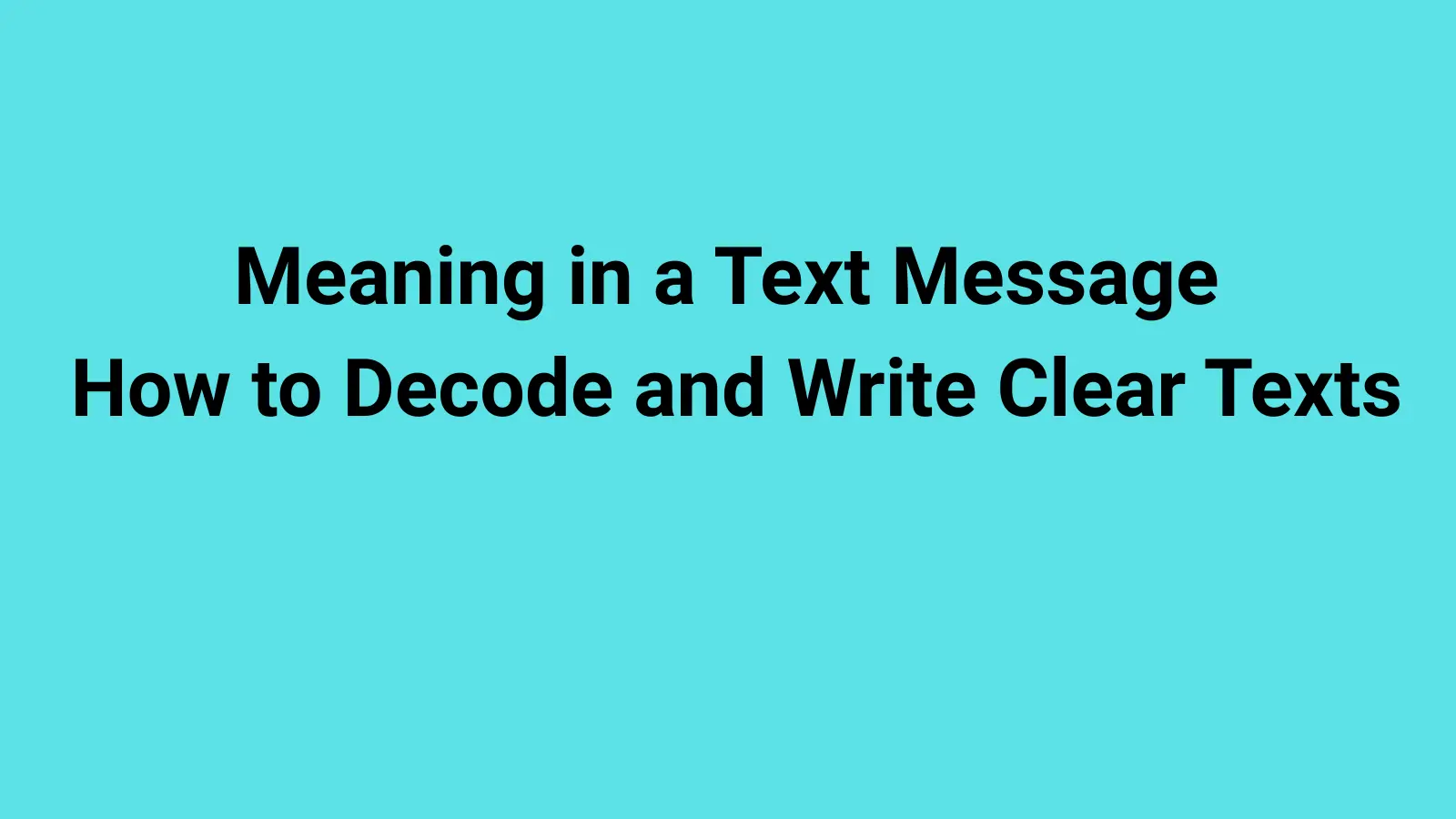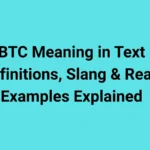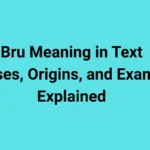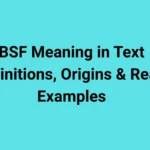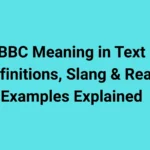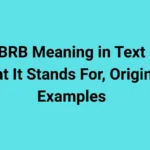If you’ve ever received a message that left you staring at your phone, thinking, “What exactly do they mean by that?”, you’re not alone.
Texting has transformed the way we communicate—quick, convenient, and often filled with shortcuts, slang, and symbols. But with speed comes ambiguity.
The meaning in a text message isn’t just about the words on the screen; it’s about tone, context, timing, emojis, punctuation, and even the relationship between sender and receiver.
This guide will break down how to understand meaning in a text message, decode hidden cues, and write messages that say exactly what you intend—whether you’re chatting with friends, family, coworkers, or someone special.
What Does “Meaning in a Text Message” Really Mean?
At its core, meaning in a text message refers to the actual intention, feeling, or idea that the sender is trying to convey through a digital message. But unlike in-person conversations, texting lacks vocal tone, facial expressions, and body language—so we have to rely on:
- Word choice
- Punctuation
- Emojis
- Response time
- Previous conversation history
- Relationship context
The result? Two people could read the same text and interpret it differently.
Example:
- “Sure.” → Could be agreement, indifference, or sarcasm, depending on context.
- “Sure 😊” → Warm and friendly.
- “Sure…” → Hesitant or possibly annoyed.
Why “Meaning in a Text Message” Can Be Tricky
Unlike face-to-face talk, texting compresses communication into short bursts. This leads to:
- Ambiguity: Words alone may lack emotional clarity.
- Over-interpretation: Readers may assign meaning based on their mood, not the sender’s.
- Abbreviations and slang: Without shared knowledge, meanings can be lost.
- Timing sensitivity: A delayed reply can feel like a shift in tone.
- Cultural and generational gaps: What feels polite to one group might feel cold to another.
Elements That Shape Meaning in a Text Message
1. Word Choice
A single swapped word can completely change the tone.
- “Can we talk?” vs. “We need to talk.”
- “I miss you” vs. “Miss ya!”
2. Punctuation
Punctuation carries emotional weight in texting.
- No punctuation → casual, rushed.
- Period → sometimes formal or even cold in casual chats.
- Exclamation → friendly or excited.
- Ellipsis (…) → trailing thought, hesitation, or suspense.
3. Emojis
Emojis add emotional cues that text alone can’t convey.
- “Good job 👍” → Encouragement.
- “Good job 🙃” → Possible sarcasm.
- “Good job 😍” → Extra warm enthusiasm.
4. Message Length
- Short replies can feel dismissive… or simply efficient.
- Longer replies often feel more thoughtful but can also seem intense.
5. Response Time
- Fast response → engaged or available.
- Slow response → busy, disinterested, or intentionally delaying.
Decoding “Meaning in a Text Message” with Context
To really understand the meaning in a text message, consider:
- Who sent it? (Close friend? Boss? Acquaintance?)
- When was it sent? (Late-night texts may carry different subtext than daytime ones.)
- What came before? (Ongoing conversation or out-of-the-blue?)
- What’s their texting style normally like? (Some people just don’t use emojis—don’t read too much into it.)
Example:
- “Fine.” from a friend after a fight = Probably not fine.
- “Fine.” from your dad after you confirm a meeting = Simply means “Okay.”
Common Examples of “Meaning in a Text Message” Misunderstandings
- The Period Problem:
“Okay.” → Might be seen as annoyed in casual texting, but neutral in work chats. - The Emoji Swap:
😊 (genuine happiness) vs. 🙃 (sarcastic or “oh well”). - Delayed Responses:
Could mean busy, distracted, unsure, or avoiding the topic—not necessarily disinterest.
How Teens Interpret “Meaning in a Text Message”
Teens often rely heavily on:
- Acronyms: LOL, IDK, TBH, FR, GTS.
- Emojis as emotional punctuation.
- Lowercase letters for casualness.
- No punctuation to avoid formality.
Example teen decoding:
- “sure” → casual yes.
- “sure.” → possible annoyance.
- “sure lol” → mild agreement, not serious.
How Professionals Interpret “Meaning in a Text Message”
In work settings:
- Short messages are often efficiency-driven, not emotional.
- Proper grammar and punctuation signal professionalism.
- Emojis are used sparingly or in informal team chats.
- Delays are usually about workload, not personal feelings.
Example:
- “Please send by EOD. Thanks.” → Firm but polite.
- “Can we hop on a quick call?” → Likely urgent.
“Meaning in a Text Message” for Casual and Family Chats
With friends and family:
- Inside jokes, GIFs, and memes carry meaning beyond words.
- Tone can be exaggerated for humor.
- Typos are forgiven (and sometimes funny).
- Response time is less formal—people might reply hours later without issue.
Common Abbreviations and Their Meanings in a Text Message
Here are popular texting acronyms that can shift meaning instantly:
- BRB – Be Right Back
- TTYL – Talk To You Later
- LMK – Let Me Know
- ICYMI – In Case You Missed It
- NVM – Never Mind
- SMH – Shaking My Head
- TBH – To Be Honest
- FR – For Real
- IMO – In My Opinion
How to Clarify Meaning in Your Own Texts
- Be explicit: “Just joking!” or “Seriously though…”
- Use emojis wisely: Match the tone you intend.
- Add context: “I’m smiling as I say this 🙂”
- Avoid overly short replies when the topic is sensitive.
- Check before sending if tone could be misread.
How to Ask for Clarification Without Sounding Awkward
If you’re unsure what someone means:
- “Just to be clear, do you mean…?”
- “Haha, not sure if that was a joke?”
- “Want to make sure I got you right—are you saying…?”
Advanced: Reading Between the Lines
Sometimes what’s not said matters as much as what is:
- Sudden change in tone → shift in mood or interest.
- Dropping emojis when they normally use them → possible tension.
- Longer gaps than usual → distraction, busyness, or intentional pause.
Cross-Cultural and Generational Differences
- Older generations may use punctuation for grammar; younger users may interpret it emotionally.
- Some cultures view directness as rude; others see it as clarity.
- Emojis may be interpreted differently globally (e.g., 🙏 is prayer in some places, “thank you” in others).
The Role of Technology in Shaping Meaning
- Read receipts add another layer—seen but not replied can mean urgency, avoidance, or simply multitasking.
- Predictive text can alter tone unintentionally.
- Voice-to-text may create odd phrasing or punctuation changes.
Quick Tips for Sending Messages with Clear Meaning
- Match your tone to your relationship.
- Don’t overuse abbreviations if clarity matters.
- If joking, signal it clearly.
- Keep sensitive topics for calls or face-to-face.
- Consider time of day before sending heavy topics.
Conclusion: Mastering Meaning in a Text Message
Understanding meaning in a text message is both art and science. You need to balance word choice, context, tone, and timing to avoid misinterpretations.
By paying attention to small cues—like punctuation, emojis, and message length—you can read others more accurately and express yourself more clearly.
The better you get at decoding and crafting meaning, the smoother your digital conversations will be.
